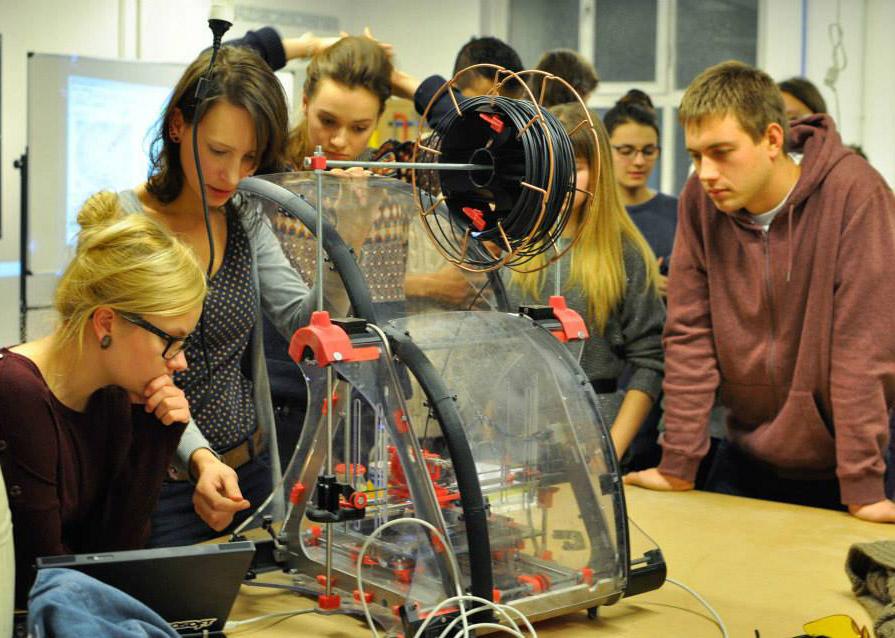 An increasing number of companies have recognized the importance of including 3D printing as part of STEM (science, technology, engineering, math) education, but the necessary equipment is on the expensive side, so schools need some assistance from companies like Zortrax, who have made educational outreach a priority. The Polish 3D printer manufacturer has launched several initiatives to get 3D printers into schools. In October, Zortrax provided 180 schools in remote areas of Poland with their M200 3D printers, along with educational software and materials.
An increasing number of companies have recognized the importance of including 3D printing as part of STEM (science, technology, engineering, math) education, but the necessary equipment is on the expensive side, so schools need some assistance from companies like Zortrax, who have made educational outreach a priority. The Polish 3D printer manufacturer has launched several initiatives to get 3D printers into schools. In October, Zortrax provided 180 schools in remote areas of Poland with their M200 3D printers, along with educational software and materials.
Zortrax’s efforts seem to be working, as case studies have shown that educational institutions at every level are embracing 3D printing across Poland.
“Studies have shown that Poland accounts for at least 10% of the global 3D printing market,” said Rafal Tomasik, CEO of Zortrax. “Poland has a thriving 3D printing industry; at least several other companies, apart from us, are trying to develop and export their products abroad. I am glad that Polish schools have noticed this trend and that a decision was made to incorporate 3D printing into their educational programs. 3D printing has brought on lots of changes, and I think that it’s very good news that more and more educational institutions have started making attempts to respond and keep up with these changes.”
It’s not just primary schools that are benefiting from Zortrax’s products; some of the most prestigious higher educational institutions in Poland have adopted the M200 and more as integral parts of their coursework. The School of Form, a high-ranking university in Poznań, has five 3D printers, courtesy of Zortrax, and they’re being used extensively in subjects including robotics, product design, CAD and parametric design. Students are encouraged to use the printers in their thesis and dissertation projects, and one graduate, Basia Dżaman, has channeled her education from the School of Form into a successful design career. As part of her thesis, Dżaman modified a robot to serve as a 3D printer and used it to print woven carbon fiber structures; she has since gone on to design for Omni3D, teach 3D printing workshops and produce some incredible individual design work.
At the other end of the educational spectrum is the Agricultural Education Centre, part of Poland’s Ministry of Agriculture and Rural Development. Agriculture in general has begun to turn to 3D printing and other new technology to update one of the world’s oldest industries, and Poland in particular is seeing a great deal of interest in 3D printing from agricultural students. The Agricultural Education Centre has been using Zortrax 3D printers as central parts of its coursework, particularly the mechanical aspects.
“As part of the subject basic machine construction, our students learn about the foundations of 3D design,” said Head of Apprenticeship Andrzej Sakowicz. “They use a program called SolidEdge along with 2D documentation as the basis for their projects. When an opportunity arose to actually use 3D printing technology, we decided that this would make an excellent combination; it would give us the opportunity to physically show what is being created via the computer and its software. After about 2 months of using our 3D printer, we already have several ready-made models. They are mainly mechanical parts – bushings, gears, hubs, etc., as that is what our curriculum consists of.”
According to teachers at the Agricultural Education Centre, 3D printing has generated a lot of interest among the students – they’re even working on establishing a 3D printing club. We’ve seen this again and again – students of all ages are fascinated by 3D printing, from kindergartners to college students. It’s a fun technology, and it’s gotten students invested in STEM classes – a feat that teachers and officials have been struggling to accomplish for years.
In that regard, Zortrax has been wildly successful in their goal of facilitating education with their products. Besides contributing their equipment to schools, they’re also using their recently opened store and showroom in Warsaw to conduct lectures and workshops. A series of lectures has been directed at students from the Warsaw Academy of Fine Arts, aimed at familiarizing them with 3D printing as a medium for future design work.
“We wanted the Zortrax Store to perform many different functions, and I’m glad that we have been able to pursue these objectives,” concluded Tomasik. “Our store is primarily, of course, a place in which you can buy our 3D printers, but it also serves as a place for people to discover and familiarize themselves with 3D printing technology. We believe that Poland needs to be educated on the benefits of 3D printing, which is why our Zortrax Store is a place which is open and willing to cooperate with the country’s educational institutions.”


